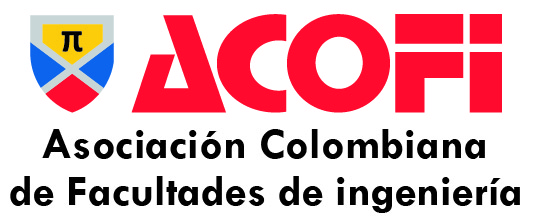Reflexions about the importance and current situation of the structural area in civil engineering programs in Colombia
DOI:
https://doi.org/10.26507/rei.v13n25.842Keywords:
Civil engineering, structuresAbstract
This paper, the importance of the structural area inside the core program of Civil Engineering is studied. Special characteristics of the Colombian academic programs in Civil Engineering (Structures) are taken as a case study. This country exhibit an elevated seismic hazard, and has a large stock of non-ductile buildings. In the past 35 years, moderate earth-quakes have destroyed several cities, killed thousands of people, and have produced significant infrastructure losses because an important number of its structures were designed and constructed with little or no consideration of lateral load effects (i.e. especially for those structures designed and constructed prior to the establishment of the Colombian’s earthquake safety standard in 1984). In this document, three random Civil Engineering programs (Structures) in Colombia are studied, and two aspects are mainly considered: (1) professors (educational background, research production and academic syllabus), and (2) university infrastructure (labs and academic tools). It was found that the main aspect which contributes to the overall University quality is the professors’ item. Therefore, several aspects related with the Colombian students inside local and international graduate programs are studied.Downloads
References
Holzer, T.L. and Savage, J.C., Global earthquake fatalities and population, Earthquake Spectra, 29, pp. 155-175, 2013.
AIS 2009, Estudio general de amenaza sísmica de Colombia 2009, Asociación Colombiana de Ingeniería Sísmica, Bogotá, AIS, 2009.
Garcia, L.E. and Sarria, A., Popayan, Colombia earthquake of March 31, 1983, Engineering Aspects (Preliminary Report), Earthquake Engineering Research Institute (EERI), Palo Alto, Ca. 1983.
Garcia, L.E., The January 25, 1999, Earthquake in the coffee growing region of Colombia: Accelerographic records, structural response and damage, and code compliance and enforcement, 12 WCEE 2000: 12th World Conference on Earthquake Engineering, Auckland, New Zeland, 2809, 2000.
Sánchez-Silva, M., Yamin, L.E. and Caicedo, B., Lessons of the 25 January 1999 earthquake in central Colombia, Earthquake Spectra, 16, pp. 493-510, 2000.
Salinas, D.R., Nonlinear truss analysis of non-ductile rein-forced concrete frames with unreinforced masonry infills, Dissertation/Thesis, Virginia Polytechnic Institute and State University Blacksburg, Virginia, USA, 2016.
Pujol, S., Ramirez, J.A. and Sarria, A., Behavior of low-rise reinforced concrete buildings, Concrete International, 22, pp. 40-44, 2000.
Prieto, G., Beroza, G., Barrett, S., López, G. and Florez, M., Earthquake nests as natural laboratories for the study of intermediate-depth earthquake mechanics, Tectonophysics, 570, pp. 42-56, 2012. DOI: 10.1016/j.tecto.2012.07.019.
Taboada, A., Rivera, L.A., Fuenzalida, A., Cisternas, A., Philip, H., Bijwaard, H., Olaya, J. and Rivera, C., Geodynamics of the northern Andes: Subductions and intracontinental deformation (Colombia), Tectonics, 19, pp. 787-813, 2000.
DANE, Censo general 2005-2006, Departamento Nacional de Estadística DANE, 2006.
NSR 2010, El reglamento colombiano de construcción sismo resistente (NSR-10), Asociación Colombiana de Ingeniería Sísmica, Bogotá, AIS, 2010.
AIS 100, Requisitos sísmicos para edificios-Norma AIS 100-81, Asociación Colombiana de Ingeniería Sísmica, Bogotá, AIS, 1981.
SEAOC, Basic design criteria of the recommended lateral force requirements and commentary, Journal of the Structural Division, 98, pp. 1913-1922, 1974.
ATC 3-06, Review and refinement of ATC 3-06 tentative seismic provisions, Report of Technical Committee 9: Regulatory Use, 1980.
Garcia, L.E., Development of the colombian seismic code, Proceedings of the Eight World Conference on Earthquake Engineering, Earthquake Engineering Research Institute (EERI), San Francisco, Ca., USA, 1984.
DEPAE. & JICA, Estudio para la prevención de desastres en el área metropolitana de Bogotá, en la República de Colombia, 2002.
Garcia, L.E. Seismology and earthquake engineering in Colombia. En: Estrategia Internacional para la Reducción de Desastres EIRD.org doc4558.
Red Sismológica Nacional de Colombia. (RNAC) Disponible en: http://seisan.sgc.gov.co/RSNC
Petroski, H., To forgive design: Understanding failure, Harvard University Press. ISBN-13:978-0674065840, 2014.
Ranking de las mejores universidades de Colombia en 2017. [en línea]. [consultado en: 25 de mayo del 2017]. Disponible en: www.dinero.com.
Soto-Arango, D.E., Los doctorados en Colombia. Un camino hacia la transformación universitaria, Revista Historia de la Educación Latinoamericana, 12(9), pp. 152-195, 2009.
www.dinero.com ¿Cuántos doctores gradúa Colombia en comparación con el resto del mundo?. Educación [en línea]. [consultado en: marzo 15 de 2017] Disponible en: http://www.dinero.com/economia/ articulo/graduados-de-doctorado-en-colombia-y-el-resto-del-mundo/242911
Departamento Nacional de Planeación de Colombia, Plan Nacional de Desarrollo 2014-2018, Todos por un nuevo país, ISBN 978-958-8340-88-3, 2015.
El Espectador.com., El precio de estudiar un doctorado en Colombia Educación. [en línea]. [Consultado en: 25 Feb 2017]. Disponible en: https://www.elespectador.com/noticias/educacion/el-precio-de-estudiar-un-doctorado-en-colombia-articulo-681786
Congreso de Colombia, Ley 30 de diciembre 28 de 1992.
Ministerio de Educación Nacional de Colombia, Decreto 1075 del 26 de mayo de 2015.
Downloads
Additional Files
Published
How to Cite
Issue
Section
License
Total or partial reproduction of the documents published in the journal is authorized only when the source and author are cited.
| Article metrics | |
|---|---|
| Abstract views | |
| Galley vies | |
| PDF Views | |
| HTML views | |
| Other views | |









